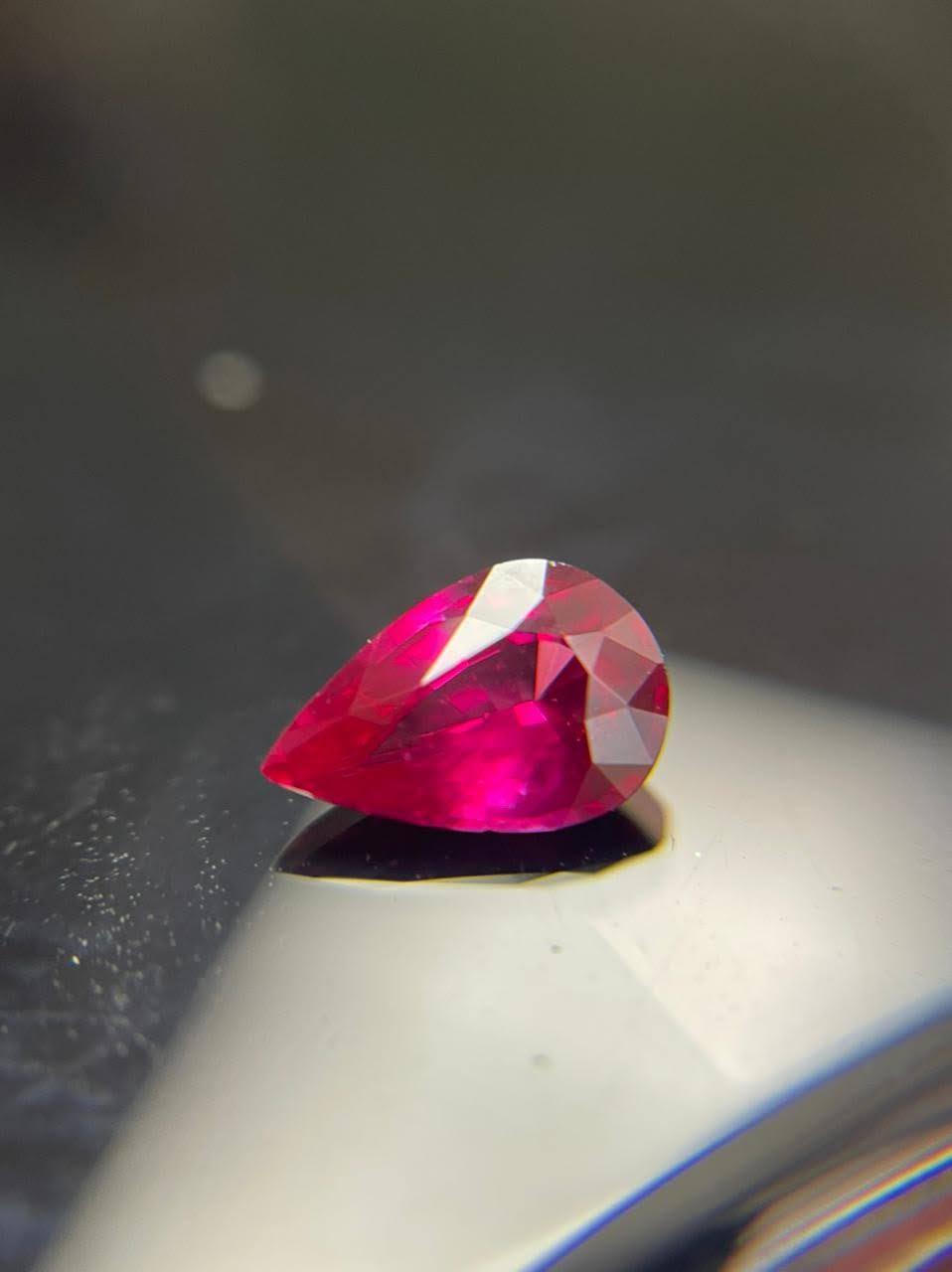
The Ruby: The Basics
Share
A very few stones are superior to rubies in the world of gemstones, So superior that when a perfect ruby of the weight of ten or more carats enters the market, it brings a price three times as great as does a diamond of the same weight. Arguably, the Ruby can be considered as the King of the Gemstones, due to its rarity in greater Carat Weights whilst having great color and clarity.
Rubies are the red colored variation of the mineral corundum (The same mineral as sapphire). When corundum occurs in any other color (excluding red), it is called sapphire. The element Chromium is what produces the Red color in the ruby. In the event that there is Iron present in the Ruby, it produces a deeper and darker variety of Ruby.
Ultraviolet (UV) Fluorescence
The presence of chromium in a ruby can make it a fluorescent gemstone, under UV light, almost making it look like a glowing red! The fluorescence is stronger to long wave UV than short wave. Stones with the strongest fluorescence are often a pinkish red color in daylight. However, it should be noted that not all Rubies have strong fluorescence, this is due to the presence of other elements such as iron.
Bonus Fact!
The renowned lab GRS (Gem Research Swiss Lab) awards GRS-type "pigeon blood" Type 1 (aka 1st page pigeon blood) for rubies displaying colors ranging from medium-strong to strongly saturated vivid red hues (high intensity and low tone); and exhibiting medium to strong fluorescence when exposed to UV light (365nm).
In 2012 GRS introduced the "pigeon blood" Type 2 color term for rubies displaying the correct vivid red color, but producing less than medium-strong fluorescence. Qualifying rubies receive an appendix (aka 2nd page pigeon blood) to the GRS gemstone report which includes the following comment: “This vivid red Mozambican ruby is reminiscent in color saturation of a GRS-type “pigeon blood” ruby (without strong fluorescence).”
Ruby vs Pink Sapphires
One of the biggest controversies in a Ruby conversation is When is it a Pink Sapphire? And When is it a Ruby? In the event that there is less chromium, the color of the stone would fall into the Pink Sapphire category. (If the stone is classified a Ruby, it’s value significantly rises compared to if it is a Pink Sapphire!)
Due to the fact that Ruby or Pink Sapphires are categorized based on color, there is a level of subjectivity involved in judging the color of the stone. When the color of a hot pink sapphire intensifies beyond a certain level, it can reach the boundaries of a Ruby. Different Gem certification labs may have different color gradings based on the gemmologists experience, no matter how objective they may try to be. This is something to best be aware of when buying Rubies.
Origins for Rubies
Rubies have been mined across the world from countries such as Burma (Myanmar), Mozambique, Madagascar, Ceylon, Tanzania (Winza), India, Thailand etc. Rubies from different origins have different unique characteristics, which may require certain treatment to make the stone attractive, depending on the region. However, the actual color and clarity of the stone is of greater importance than the locality of the stone.
It is a common misconception that all Burmese rubies are special and have an additional wow factor, this is not true. Whilst some of the best rubies have originated from Burma, there have also been plenty of mediocre and inexpensive rubies that has originated from Burma (Just like any other region).
Rubies of the highest value will be pure red in color, without any tones of violet, orange or brown and are transparent in clarity. A fine ruby can be among the most expensive of any stone in the world.
What makes a good ruby?
Similar to other gemstones, Rubies also have the 4Cs. (Read The 4Cs of Gemstone Valuation)
